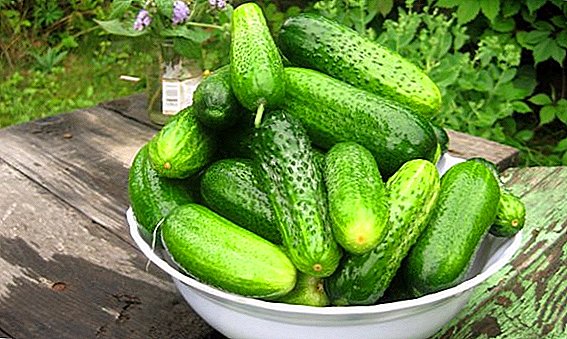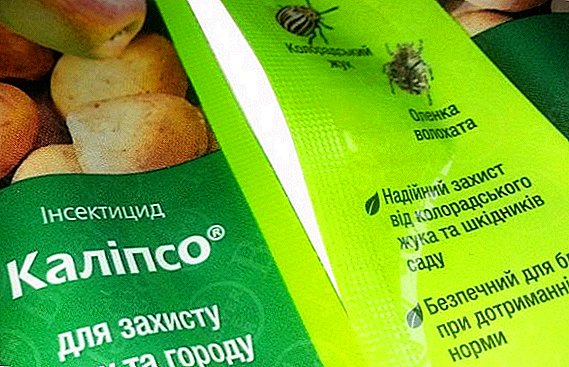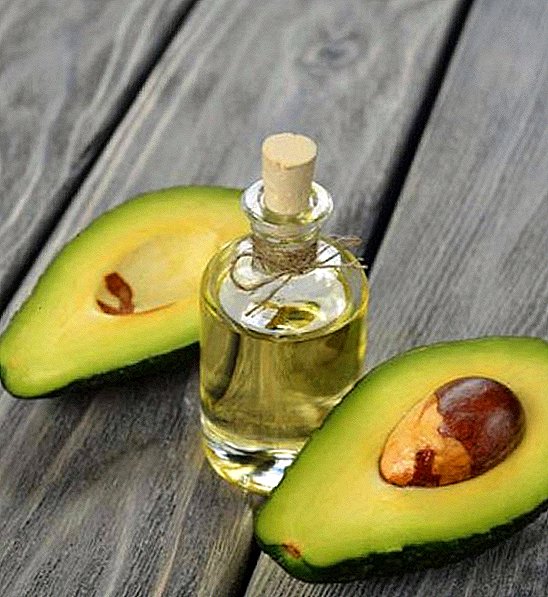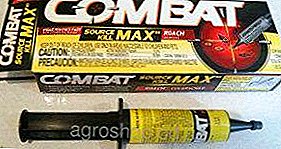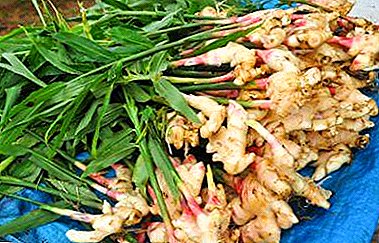
It is possible to feed grown tomatoes not only fertilizers purchased on the basis of chemical compounds, but also folk remedies. They are no less effective and completely natural. Tomatoes can be fed not only ready-made fertilizers based on chemical compounds. Also well proven natural dressing, thanks to which the plants give a good harvest. Fertilization for tomatoes contributes to the proper growth and development of tomato bushes, abundant flowering, quality fruit set, and their quick ripening of the crop.
Advantages and disadvantages of natural fertilizers
The disadvantages of folk fertilizers, such as manure, include:
- For the breakdown of trace elements in them will take from three weeks to several months. Not fully ripe fertilizer, instead of benefiting, will contribute to the emergence of insect pests.
- Non-volatile nitrogen contained in this type of top dressing can contaminate the soil.
- Also in folk remedies we can never know the exact dosage of the main elements.
Common species
Nettle infusion
 To prepare the infusion is necessary to collect the young leaves of nettle. They contain a large concentration of nitrogen, potassium and iron that have not yet been squandered.
To prepare the infusion is necessary to collect the young leaves of nettle. They contain a large concentration of nitrogen, potassium and iron that have not yet been squandered.- 2/3 capacity is filled with nettle and filled with water, but not to the very edge.
- Cover with a lid and insist in a warm place for 7-10 days.
- After the right time 1 l. Infusion diluted in 10 liters of water.
- The resulting solution is watered under the root of tomatoes at the rate of 1-2 liters per plant.
Fertilizer infusion of nettle can not be often. A maximum of two supplements during the month.
We offer to watch a video about that. how to make fertilizer for nettle tomatoes:
Serum
 Use natural whey can be both for seedlings and for adult plants.
Use natural whey can be both for seedlings and for adult plants.
To prepare the solution you need:
- Take 1 liter of dairy product and 20 drops of iodine, mix with 10 liters of water.
- Stir and feed tomatoes at the rate of 1 liter of funds for one adult bush.
Ash, iodine, ammonia
 To feed tomatoes with ashes, you need:
To feed tomatoes with ashes, you need:- In 10 liters of water dilute 1 cup of ash.
- The resulting solution to water the beds with tomatoes. Not dissolved ash just pour under the plants.
- Ash can be used for foliar fertilizing. For this:
- 300 grams of ash must be diluted in 3 liters of water and boiled for half an hour.
- After that, insist for five hours, bring the volume of liquid to ten liters and add a small amount of liquid soap to the dressing to keep better on the leaves.
- The solution must be drained and spray them with tomato tops.
- With the help of iodine, it is possible not only to speed up the ripening of fruits, but also to save tomatoes from late blight. For this:
- Four drops of iodine are dissolved in 10 liters of water.
- The resulting liquid is poured over tomatoes at the rate of 2 liters per plant.
- Ammonia, being a nitrogenous substance, is excellent for the development of plants.
Created by himself with an alcohol solution, removes the painful yellowness of the leaves, because when the culture lacks nitrogen, there is a slowdown in the production of chlorophyll. Universal solution is easy to prepare.
For this:
- Mix 50 ml of ammonia with 4 liters of water and water the plant under the root.
- To make such dressing of tomatoes as effective as possible, it should be carried out regularly.
- You can also feed the tomatoes chicken droppings. This fertilizer is fast-acting, contains a lot of nitrogen and phosphorus.
We offer to watch a video on how to prepare fertilizers for tomatoes from iodine:
We also offer a look at how to prepare fertilizer for tomatoes from ash:
Video on how to make fertilizer for tomatoes from ammonia:
Recommendations for use and characterization of the chemical composition
 The principles of feeding the seedlings of tomatoes with folk remedies are the same as with fertilizing with mineral fertilizers:
The principles of feeding the seedlings of tomatoes with folk remedies are the same as with fertilizing with mineral fertilizers:
- Do not exceed the dose, it is better to give the plant a smaller amount of top dressing.
- Make a nutritional composition only on wet ground.
- Seedlings are fed in the morning.
- The temperature of the liquid feeding should be 22-25 degrees.
An excellent top dressing for growing seedlings of tomatoes is ash.. It refers to a long-acting fertilizer, so it can be added in small quantities immediately to the soil in which tomato seedlings will grow.
Ash of different plants contains different doses of chemical elements:
- A large amount of calcium in the ash of deciduous trees.
- A lot of phosphorus in the ashes of coniferous trees.
- The ash of grapevine or herbaceous plants is extremely rich in potassium.
- Iron and lime are found in peat ash.
Ashes for seedlings best to make in the form of exhaust. To do this, pour a glass of ash with 8 liters of boiling water, insist day and filter.
Along with the ash, which can be applied to the soil before sowing, use the sleeping coffee grounds. It will improve the structure of the soil and feed the seedlings.
You can make the following nutritional formulations prepared according to popular recipes with irrigation:
- Skins from four bananas are placed in a three-liter jar and filled with warm water. Three days later, the infusion is ready, it is an invaluable source of potassium.
- The shell of 3-4 eggs should be slightly crushed, put in a three-liter jar and pour water. After a few days, this solution can be watered seedlings.
Nuances in growing adult bushes
Open field fertilizer
Application of feeding is recommended to be divided into several stages.:
- Some time after planting in the ground, young plants are fed with infusion of herbs.
 To do this, any grass is suitable, with only one prerequisite - the absence of seeds in it.
To do this, any grass is suitable, with only one prerequisite - the absence of seeds in it.Tomatoes are fertilized with a mixture of 10 liters of water and 0.5 liters of herbal infusion. The solution is made under the root at the rate of 1 liter per 1 plant.
- During the budding make wood ash. Before the earth is well watered. Ashes can sprinkle the beds, or add water to it and water the tomatoes with the prepared solution.
- When the bushes bloom and form the ovary, they feed the infusion of mullein or bird droppings. The fermented infusion is diluted with water at the rate of 1:10 and the bushes of tomatoes are poured over it. It is important to ensure that the solution does not fall on the leaves, it will burn them.
In the greenhouse
To get a good harvest, from time to time they change the place of planting of tomatoes.. Competent crop rotation prevents depletion of the land. Under greenhouse conditions, this procedure is unrealistic, so greenhouse plants are fed for the first time before planting.
In autumn, when perekop, rotten humus is introduced into the soil at the rate of 2 kg per square meter. This method of preparing the beds fills the missing amount of organic matter in the soil after the previous harvest.
To avoid barren flowers, the bushes during flowering are treated with the following composition:
- Iodine - 3 drops.
- Water - 1 liter.
- Whey - 3 tablespoons.
- Hydrogen peroxide - 1 tsp.
This solution is used to spray the green part of the plant.
Read more about feeding tomatoes in the greenhouse here.
How to feed the seedlings of tomatoes, so that they were plump?
To harvest plump and juicy tomatoes, need to pay special attention to the introduction of nutrients in seedlings.
 For this you can use:
For this you can use:
- Yeast. The effect of making yeast is the stimulation of growth, the thickening of thin seedlings, the good development of the root system. To prepare the solution, you will need 10 liters of warm water, in which the yeast packaging is diluted.
- Onion Husk. Infusion of onion peel refers to a soft dressing, they can replace the water during each irrigation or use from time to time. For cooking, you need to pour two handfuls of husk into a liter jar and pour hot water over it, leave for a day and strain. Additional dilution is not necessary. Seedlings watered with the resulting solution under the root.
More information about feeding the seedlings of tomatoes, to have plump stems, you can find here.
Taking note of simple and, at the same time, very effective recipes for the preparation of natural supplements, it is possible to produce consistently large yields of tomatoes with excellent taste qualities from year to year.


 To prepare the infusion is necessary to collect the young leaves of nettle. They contain a large concentration of nitrogen, potassium and iron that have not yet been squandered.
To prepare the infusion is necessary to collect the young leaves of nettle. They contain a large concentration of nitrogen, potassium and iron that have not yet been squandered. To feed tomatoes with ashes, you need:
To feed tomatoes with ashes, you need: To do this, any grass is suitable, with only one prerequisite - the absence of seeds in it.
To do this, any grass is suitable, with only one prerequisite - the absence of seeds in it.